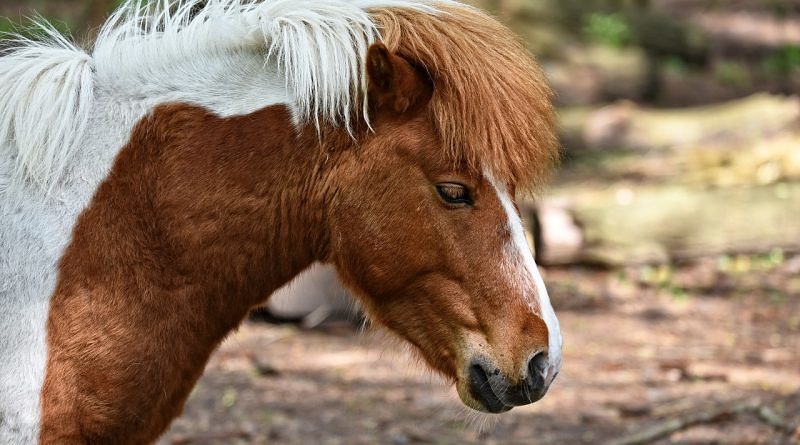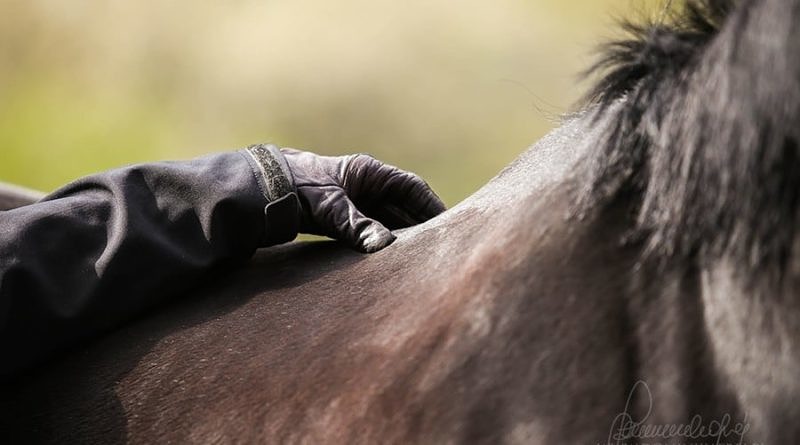Lifting the Veil: Is Prascend making my horse depressed?
The standard treatment for PPID seems to have mood-altering side-effects – can science help explain why?
Horses that suffer from Cushing’s are often prescribed a drug called Prascend to manage the condition. Not infrequently, owners report that horses starting on this treatment show drastic changes in their behaviour for some time following its initiation. These changes often include a loss of appetite and general lethargy. Many owners describe their horses as appearing ‘depressed’ and refer to horses in this state as having entered the veil.
Those who stick with the treatment typically find that their horse will revert to more familiar behaviour patterns – usually after about a week, but this can reportedly take months for some.
Some owners opt to reduce the dose to a level that doesn’t influence their horse’s behaviour to this extent and then gradually increase it over time to the prescribed levels in order to limit this effect of the drug.
Other owners give up on Prascend altogether, citing their distress at seeing their horse seemingly so unhappy. The change in behaviour is striking and a quick search online will pull up countless others who have experienced the same.
So are horses in the midst of the so-called “veil” really suffering from Prascend-induced depression?
To fully address this question, we first need to understand what the condition known as Cushing’s disease actually is.
What is Cushing’s?
In horses Cushing’s is caused by a benign tumour in the pituitary gland called a pituitary adenoma, or by gross enlargement (hyperplasia) of the pituitary gland. In equine Cushing’s, these specifically affect a part of the pituitary gland known as the pars intermedia and this gives the disease its more modern name – pituitary pars intermedia dysfunction (PPID).
The pituitary gland is located at the base of the brain and it has an important role: it is responsible for maintaining appropriate levels of hormones in the blood. When the pituitary gland isn’t working properly, the body can undergo many drastic changes under the influence of hormones that are not being properly regulated. These can include both visible physical changes and behavioural changes.
Horses with this type of tumour or enlargement over-produce hormones that would normally be kept in check. In particular they produce too much of a precursor molecule called pro-opiomelanocortin (POMC) from which many other hormones within the body are derived. As a result of these abnormal levels, common symptoms include an unusually long coat (hirsutism), delayed or abnormal shedding, excessive drinking and urination, laminitis, changes in the distribution of body fat and fat deposits, development of a pot belly, muscle wastage, being prone to infection, and being slow to heal.
What is Prascend?
The go-to treatment for Cushing’s is a drug available under the trade name of Prascend. The active ingredient in this medication is pergolide.
Pergolide is a type of molecule that acts as a dopamine receptor agonist. An agonist is an ‘activator’. In other words, pergolide is an activator of dopamine receptors.
Horses (and other animals) have dopamine receptors which help the body to mediate a variety of functions. Ordinarily, these receptors are activated by a neurotransmitter called dopamine.
Dopamine is popularly regarded as the “happy hormone” but in reality it has a multitude of complex roles. When your dopamine levels aren’t quite right, a lot of things can go wrong.
Horses with Cushing’s disease typically have as little as 10% of the normal levels of dopamine in the pars intermedia region of the pituitary gland. The reason this matters is that dopamine produced in the hypothalamus of the brain is responsible for mediating the activity of the pars intermedia region of the pituitary gland. When dopamine is being produced at normal levels, it binds to dopamine receptors in the pars intermedia of the pituitary gland and stops the pituitary gland from producing too much POMC.
But when there isn’t enough dopamine, the pituitary gland goes into overdrive, producing far too much POMC and enlarging to ‘keep up’ with the need to produce even more! The result is the symptoms of Cushing’s disease.
By replacing the absent dopamine with pergolide, Prascend can put a stop to this runaway process. In some cases the enlargement of the pituitary gland might even be reversed.
Depression & The Veil
As well as activating dopamine receptors, pergolide can also activate serotonin receptors. This is of interest because serotonin is actually yet another neurotransmitter with a big reputation as a “happy chemical”. Both dopamine and serotonin seem to have a role to play in regulating moods. In humans, a deficiency in each of these has been implicated in depression, as well as anxiety disorders. In fact, many of the most widely used antidepressants rely on this link and work to increase the activity of these types of neurotransmitters in the brain through various mechanisms – much like pergolide.
So why then does it look as though some horses become depressed after going on pergolide? We can only speculate – but giving them a dose of “happy chemicals” that their body isn’t used to is quite literally “drugging” them and may be suppressing many of their normal responses. It takes some time for the horse’s body to adjust to these new levels and for the horse to return to ‘normal’. But in the meantime the horse may appear, in the words of one owner I spoke to, “away with the fairies”!
Of course, with so many complex and interlinked biological processes becoming impacted by this one molecule, it is going to be impossible to predict exactly how each and every individual will be affected. The best we can do is take the science, our knowledge and observations of the individual horse, and our vet’s advice, and try to make the best case-by-case decisions for our horses’ long-term well-being. If you are worried about your horse’s response to Prascend, be sure to discuss your concerns with your vet – they are the best placed to advise you and help you make the best decisions regarding your horse’s treatment options.







